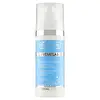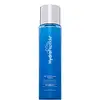What's inside
What's inside
 Key Ingredients
Key Ingredients

 Benefits
Benefits

 Concerns
Concerns

 Ingredients Side-by-side
Ingredients Side-by-side

Water
Skin ConditioningCaprylic/Capric Triglyceride
MaskingPropanediol
SolventTriethylhexanoin
MaskingDicaprylyl Ether
EmollientNiacinamide
SmoothingTrehalose
HumectantCetearyl Olivate
Sorbitan Olivate
Emulsifying1,2-Hexanediol
Skin ConditioningSnail Secretion Filtrate
Skin ConditioningTripelargonin
EmollientGlyceryl Stearate
EmollientPhytosphingosine
Skin ConditioningLinoleic Acid
CleansingCentella Asiatica Extract
CleansingButylene Glycol
HumectantPolyglutamic Acid
Skin ConditioningLinolenic Acid
CleansingDimethicone
EmollientSodium Stearoyl Glutamate
CleansingAmmonium Acryloyldimethyltaurate/Vp Copolymer
Behenyl Alcohol
EmollientDisodium EDTA
Tocopherol
AntioxidantPhenoxyethanol
PreservativeEthylhexylglycerin
Skin ConditioningParfum
MaskingLimonene
PerfumingHexyl Cinnamal
PerfumingLinalool
PerfumingGeraniol
PerfumingCitronellol
PerfumingWater, Caprylic/Capric Triglyceride, Propanediol, Triethylhexanoin, Dicaprylyl Ether, Niacinamide, Trehalose, Cetearyl Olivate, Sorbitan Olivate, 1,2-Hexanediol, Snail Secretion Filtrate, Tripelargonin, Glyceryl Stearate, Phytosphingosine, Linoleic Acid, Centella Asiatica Extract, Butylene Glycol, Polyglutamic Acid, Linolenic Acid, Dimethicone, Sodium Stearoyl Glutamate, Ammonium Acryloyldimethyltaurate/Vp Copolymer, Behenyl Alcohol, Disodium EDTA, Tocopherol, Phenoxyethanol, Ethylhexylglycerin, Parfum, Limonene, Hexyl Cinnamal, Linalool, Geraniol, Citronellol
Water
Skin ConditioningLactic Acid
BufferingPolysorbate 20
EmulsifyingGlycerin
HumectantCitrus Aurantium Dulcis Callus Culture Extract
Skin ConditioningXanthan Gum
EmulsifyingLeuconostoc/Radish Root Ferment Filtrate
AntimicrobialLactobacillus Ferment
Skin ConditioningPropanediol
SolventPopulus Tremuloides Bark Extract
AntiseborrhoeicAcetyl Hexapeptide-30
Skin ConditioningArginine/Lysine Polypeptide
Skin ConditioningVaccinium Myrtillus Fruit/Leaf Extract
AstringentSaccharum Officinarum Extract
MoisturisingAcer Saccharum Extract
Skin ConditioningCitrus Aurantium Dulcis Fruit Extract
MaskingCitrus Limon Bud Extract
HumectantArctostaphylos Uva Ursi Leaf Extract
Skin ConditioningMagnesium Ascorbyl Phosphate
AntioxidantHydrolyzed Soy Protein
HumectantMenthyl Ethylamido Oxalate
Skin ConditioningMorus Alba Leaf Extract
Skin ConditioningGlycyrrhiza Glabra Root Extract
BleachingCamellia Oleifera Leaf Extract
AstringentChamomilla Recutita Flower Extract
MaskingSodium Hyaluronate
HumectantAllantoin
Skin ConditioningGeranium Maculatum Extract
TonicCaprylic/Capric Triglyceride
MaskingCitrus Limon Peel Extract
EmollientCitrus Aurantium Dulcis Peel Extract
Emulsion StabilisingGardenia Taitensis Flower Extract
Skin ConditioningCucumis Sativus Fruit Extract
EmollientLimonene
PerfumingCitral
PerfumingHydroxycitronellal
PerfumingWater, Lactic Acid, Polysorbate 20, Glycerin, Citrus Aurantium Dulcis Callus Culture Extract, Xanthan Gum, Leuconostoc/Radish Root Ferment Filtrate, Lactobacillus Ferment, Propanediol, Populus Tremuloides Bark Extract, Acetyl Hexapeptide-30, Arginine/Lysine Polypeptide, Vaccinium Myrtillus Fruit/Leaf Extract, Saccharum Officinarum Extract, Acer Saccharum Extract, Citrus Aurantium Dulcis Fruit Extract, Citrus Limon Bud Extract, Arctostaphylos Uva Ursi Leaf Extract, Magnesium Ascorbyl Phosphate, Hydrolyzed Soy Protein, Menthyl Ethylamido Oxalate, Morus Alba Leaf Extract, Glycyrrhiza Glabra Root Extract, Camellia Oleifera Leaf Extract, Chamomilla Recutita Flower Extract, Sodium Hyaluronate, Allantoin, Geranium Maculatum Extract, Caprylic/Capric Triglyceride, Citrus Limon Peel Extract, Citrus Aurantium Dulcis Peel Extract, Gardenia Taitensis Flower Extract, Cucumis Sativus Fruit Extract, Limonene, Citral, Hydroxycitronellal
Ingredients Explained
These ingredients are found in both products.
Ingredients higher up in an ingredient list are typically present in a larger amount.
This ingredient is an emollient, solvent, and texture enhancer. It is considered a skin-softener by helping the skin prevent moisture loss.
It helps thicken a product's formula and makes it easier to spread by dissolving clumping compounds.
Caprylic Triglyceride is made by combining glycerin with coconut oil, forming a clear liquid.
While there is an assumption Caprylic Triglyceride can clog pores due to it being derived from coconut oil, there is no research supporting this.
Learn more about Caprylic/Capric TriglycerideLimonene is a fragrance that adds scent and taste to a formulation.
It's found in the peel oil of citrus fruits and other plants such as lavender and eucalyptus. The scent of limonene is generally described as "sweet citrus".
Limonene acts as an antioxidant, meaning it helps neutralize free radicals.
When exposed to air, oxidized limonene may sensitize the skin. Because of this, limonene is often avoided by people with sensitive skin.
The term 'fragrance' is not regulated in many countries. In many cases, it is up to the brand to define this term. For instance, many brands choose to label themselves as "fragrance-free" because they are not using synthetic fragrances. However, their products may still contain ingredients such as essential oils that are considered a fragrance.
Learn more about LimonenePropanediol is an all-star ingredient. It softens, hydrates, and smooths the skin.
It’s often used to:
Propanediol is not likely to cause sensitivity and considered safe to use. It is derived from corn or petroleum with a clear color and no scent.
Learn more about PropanediolWater. It's the most common cosmetic ingredient of all. You'll usually see it at the top of ingredient lists, meaning that it makes up the largest part of the product.
So why is it so popular? Water most often acts as a solvent - this means that it helps dissolve other ingredients into the formulation.
You'll also recognize water as that liquid we all need to stay alive. If you see this, drink a glass of water. Stay hydrated!
Learn more about Water